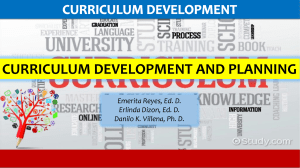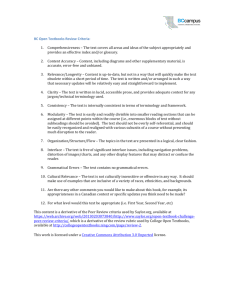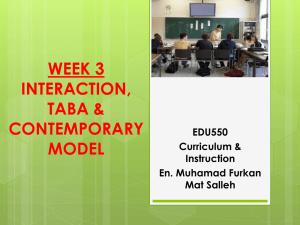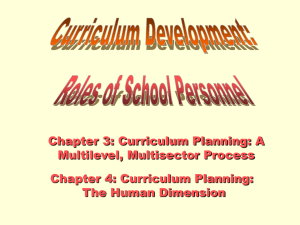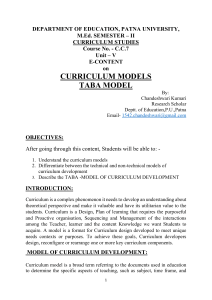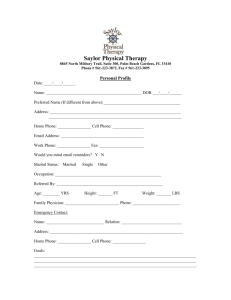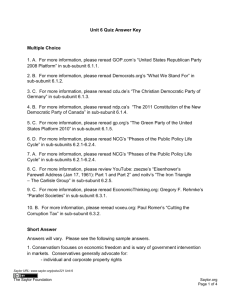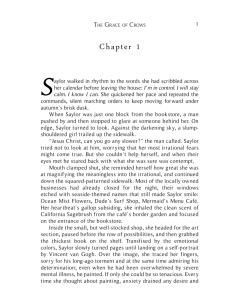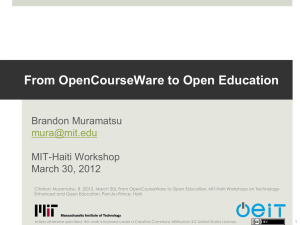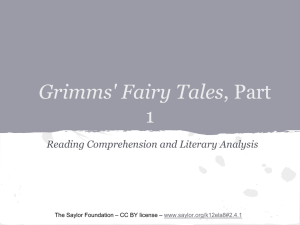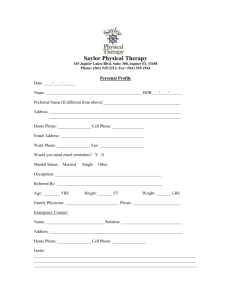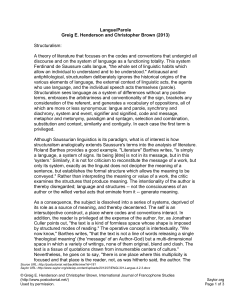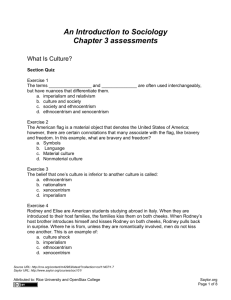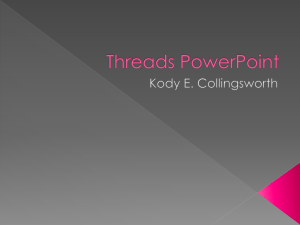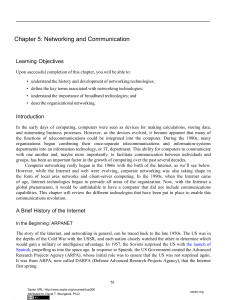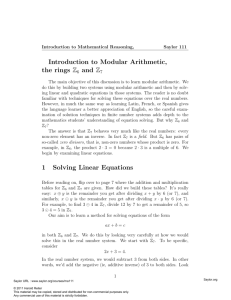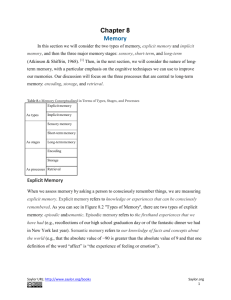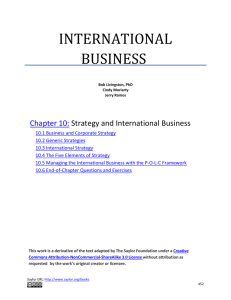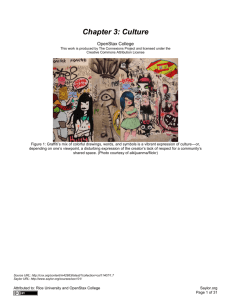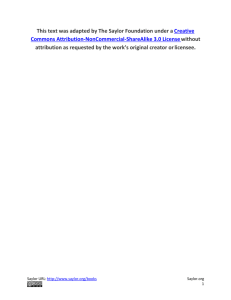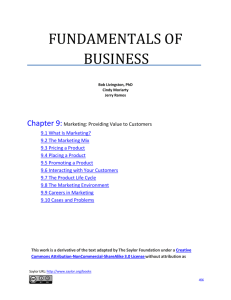Post
advertisement
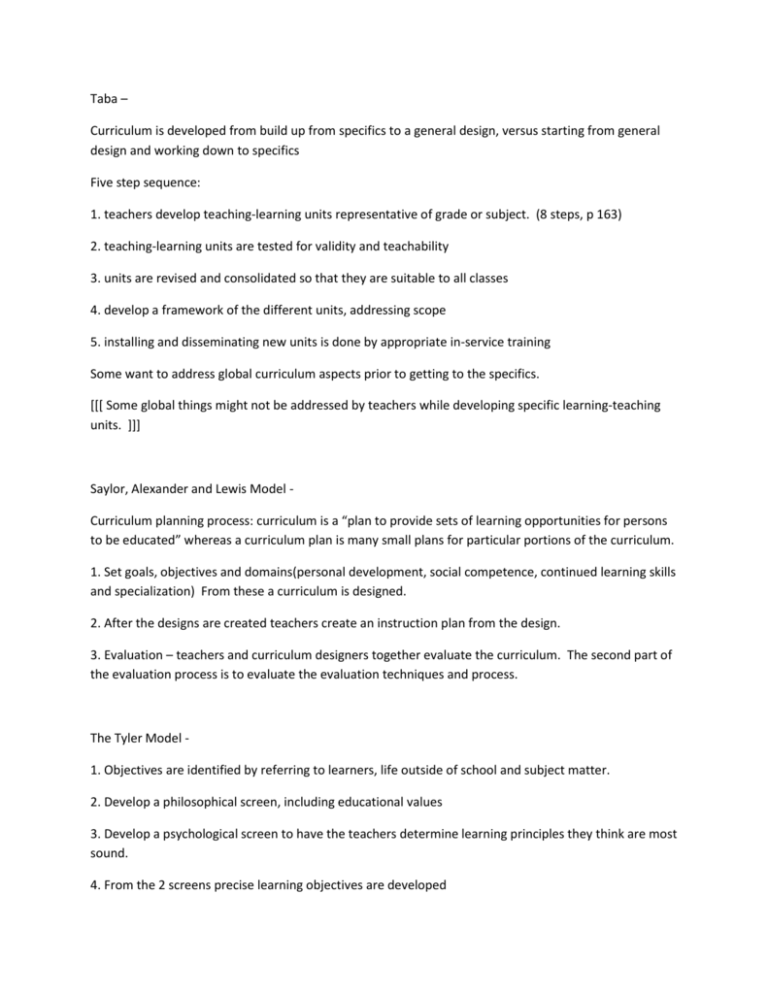
Taba – Curriculum is developed from build up from specifics to a general design, versus starting from general design and working down to specifics Five step sequence: 1. teachers develop teaching-learning units representative of grade or subject. (8 steps, p 163) 2. teaching-learning units are tested for validity and teachability 3. units are revised and consolidated so that they are suitable to all classes 4. develop a framework of the different units, addressing scope 5. installing and disseminating new units is done by appropriate in-service training Some want to address global curriculum aspects prior to getting to the specifics. [[[ Some global things might not be addressed by teachers while developing specific learning-teaching units. ]]] Saylor, Alexander and Lewis Model Curriculum planning process: curriculum is a “plan to provide sets of learning opportunities for persons to be educated” whereas a curriculum plan is many small plans for particular portions of the curriculum. 1. Set goals, objectives and domains(personal development, social competence, continued learning skills and specialization) From these a curriculum is designed. 2. After the designs are created teachers create an instruction plan from the design. 3. Evaluation – teachers and curriculum designers together evaluate the curriculum. The second part of the evaluation process is to evaluate the evaluation techniques and process. The Tyler Model 1. Objectives are identified by referring to learners, life outside of school and subject matter. 2. Develop a philosophical screen, including educational values 3. Develop a psychological screen to have the teachers determine learning principles they think are most sound. 4. From the 2 screens precise learning objectives are developed 5. learning experiences are selected 6. the learning experiences are then organized 7. and finally they are evaluated. COMPARISON as POSTED… (NOTES not POSTED are ABOVE): I chose to compare and contrast the Taba model and Saylor Alexander and Lewis model. These were chosen because I wanted a model that worked top-down and the other bottom up. Taba’s inductive versus Saylor’s deductive approach represents one of the biggest differences of any strategic endeavor, including curriculum development. My reason for choosing these two models, a top down versus bottom up approach is obviously the first major difference between the two models: the Taba starts with teachers developing teaching-learning units versus the Saylor model which starts at the top with overall goals and objectives. The Taba model outlines a sequence of steps (1. teachers develop unit, 2. units are tested, 3. units are revised, 4. a framework of units is developed, 5. units are implemented) versus the Saylor model which describes the components (goals, objectives & domains, instruction plan, evaluation plans) of a very general curriculum development process (design, implement, evaluate). The Saylor model has the critical evaluation component that is not explicitly mentioned in the Taba model. What the Taba model does about half way through the process is revise and consolidate teaching-learning units. The two models also have several major aspects in common including: In both, teachers are the primary developers of instructional units as referred to as learningteaching units Both do have some form of testing for validity or evaluating. In the Taba case after each teaching-learning unit is developed it is verified. Saylor evaluates the entire curriculum including the instruction plans. Both use objectives, but at different levels. The Taba model does so at the teaching learning unit level, while Saylor uses objectives at the curriculum level. Like my classmates I used our course resources: Marzano, R., Pickering, D., & Pollock, J., Classroom instruction that works: Research-based strategies for increasing student achievement Olivia, P. "Models for Curriculum Development"
